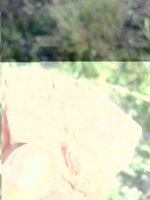MAMucker
Bronze Member
This ‘tool’ is made of a fine brown lithic (I’m guessing it’s Jasper). I picked it up a few weeks ago, and just got around to taking a good close look at it. It’s another Pebble Industry artifact found on the coastline of MA.
You can see the rind (or cortex) left on wide end
In my opinion, it’s design reveals a likely purpose other than the “go to” scraper identification. It seems to be a Wedge.












You can see the rind (or cortex) left on wide end
In my opinion, it’s design reveals a likely purpose other than the “go to” scraper identification. It seems to be a Wedge.












Upvote
0



















